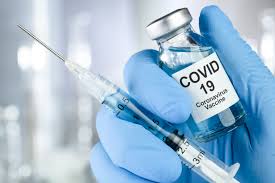COVID-19 Hospitalizations Up In 28 States
COVID-19 hospitalizations are ticking up in 28 states and Washington, D.C.
Nationwide, COVID-19 cases increased 61 percent over the past 14 days, according to HHS data collected by The New York Times. Cases of COVID-19 have increased in the last 14 days in 44 states and Washington, D.C. Reported case counts may be directionally helpful at this point of the pandemic, given the use of rapid, at-home COVID-19 tests that result in under-counting.
“I think that we’re dramatically undercounting cases,” former FDA commissioner Scott Gottlieb, MD, told CBS News on April 11. “We’re probably only picking up one in seven or one in eight infections.”
Hospitalizations are up 6 percent nationwide over the last 14 days, with a daily average of 15,908 people hospitalized with COVID-19 as of April 27. Here are the 14-day changes for hospitalizations in each state and Washington, D.C., reporting an increase, along with their daily average hospitalizations:
New Hampshire: 80 percent (78 hospitalizations)
Vermont: 66 percent (52)
Massachusetts: 60 percent (443)
New York: 41 percent (1,923)
Connecticut: 39 percent (221)
Hawaii: 34 percent (51)
Wyoming: 30 percent (8)
New Jersey: 27 percent (562)
Iowa: 24 percent (82)
Minnesota: 24 percent (307)
Michigan: 20 percent (555)
Rhode Island: 18 percent (59)
Oregon: 15 percent (229)
Pennsylvania: 13 percent (704)
Illinois: 13 percent (634)
North Dakota: 12 percent (51)
Maryland: 11 percent (343)
Washington: 11 percent (543)
South Carolina: 10 percent (108)
Colorado: 9 percent (146)
Delaware: 9 percent (133)
Wisconsin: 8 percent (216)
Florida: 6 percent (1,031)
Virginia: 6 percent (274)
Maine: 5 percent (121)
Indiana: 4 percent (250)
Nebraska: 4 percent (74)
Washington, D.C.: 2 percent (69)
Alabama: 1 percent (172)
The 14-day changes for cases in each state reporting an increase, along with their daily average cases, can be found through HHS data collected by The New York Times here. Seven-day changes for cases in each state can be found here.
The more contagious omicron subvariant BA.2 makes up 68.1 percent of new cases in the U.S., according to the latest estimates from the CDC. New Jersey has the highest proportion of BA.2 cases of all states, according to the latest ranking of states by the subvariant’s prevalence.
President Joe Biden signed into law on March 15 a sweeping $1.5 trillion bill that funds the government through September. The legislation did not include the COVID-19 funding the White House had requested from Congress because of partisan disagreement about offsetting the funding.
Senate negotiators agreed to a $10 billion COVID-19 aid package April 4, repurposing earlier unused COVID-19 funds. The legislation’s package is now complicated by conflict over President Biden’s immigration policy. Republican senators now want a vote on an amendment that would keep in place the Title 42 border restrictions, which allow limits on immigration because of the pandemic. The bill can’t proceed without the vote, they say.
U.S. lawmakers began their two-week recess on April 8 without acting on the $10 billion COVID-19 relief package. They returned to the session this week.
The current lack of funding is affecting resources for COVID-19 testing and treatment. The Health Resources and Services Administration stopped accepting providers’ claims for COVID-19 testing and treatment of the uninsured on March 22 because of a lack of sufficient funds and stopped accepting claims for the vaccination of uninsured people on April 5. The federal government is also cutting back shipments of monoclonal antibody treatments to states by 30 percent, and the U.S. supply of those treatments could run out as soon as May.





